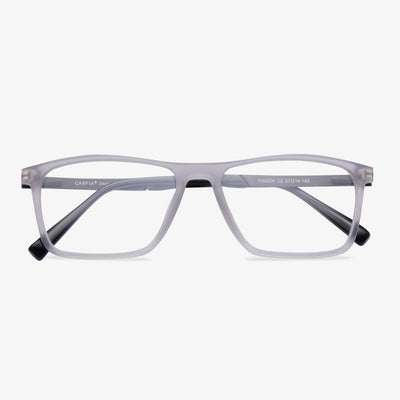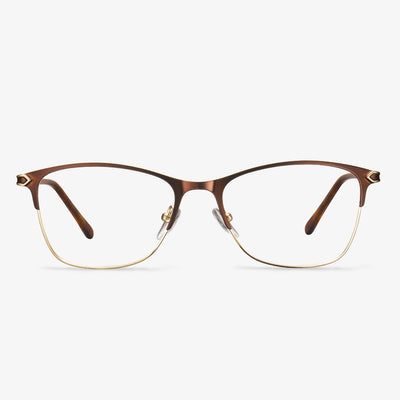Basic principles of progressive lenses
The surface of the progressive slice is divided into five regions. There are far, middle, and near optical areas. They are respectively corresponding to see distant objects, middle distance objects in the near distance objects. One pair of glasses is multi-purpose. In appearance, it is not very different from regular lenses. There is no clear dividing line. Distal use area: The area above the progressive slice is the distal use area, which is used to correct the distal refractive error. Proximity area: from the matching lens cross down, the refractive power of the lens continuously increases the positive degree, which is used to see close objects. Gradient area: The channel connecting the far and near areas. It is an area of regular change from top to bottom, used for transitioning and seeing objects at intermediate distances. The length of the gradient is very important for the wearer's adaptation. The rate at which the degree of gradient changes is called gradient. The gradient can be uniform or variable. Peripheral area: Changes in the surface curvature of the lens will lead to aberrations in the peripheral areas on both sides of the lens, mainly astigmatism and prism effect, which will interfere with a vision to a certain extent, resulting in blurred vision or distortion. And it will affect the wearer's adaptation to the progressive lens.
Clear glasses can be stylish for children.
Children who wear clear glasses can choose the glasses with good gloss, high hardness, and are not easy to scratch, not easy to wear, durable. Colorful, beautiful, and fashionable glasses show the lovely image of childlike innocence. They had better have the characteristic such as corrosion-resistant, not an easy allergy quality. They are tough enough, colorful, fashionable, and energetic.
The Benefits of Anti-Glare Glasses
As is well known, glare is the excessive brightness caused by direct light or reflected light. It often occurs when sunlight bounces off a reflective surface like water or snow. Of course, anti-glare glasses can also be caused by other factors.
Standard plastic lenses are able to reflect approximately 8% of the light that reaches your glasses and high-index lenses often reflect up to 12% of available light. Hence, anti-glare glasses come in a lot of advantages.
The anti-reflective glasses can reduce eye strain and make your eyeglasses look more attractive because the anti-reflective coating can eliminate reflections from the front and back surfaces of your eyeglass lenses. With this feature, more light can pass through your lenses to improve your vision with fewer distractions and the lenses look nearly invisible.
In addition, anti-glare glasses are helpful to high-index lenses, which reflect more light than regular plastic lenses. In general, the higher the index of refraction of the lens material, the more light will be reflected from the surface of the lenses.
Anti-glare glasses can protect your eyes from UV rays (sunlight that doesn’t appear on our visual spectrum). This feature can be enhanced by some photochromatic or polarized lenses.
KoalaEye Blue Light Blocking Glasses
Relying on strong development and research strength, KoalaEye anti-blue light glasses are made of high-quality materials, with higher light transmittance, stronger optical performance, and a clearer experience after wearing. Superior performance can effectively block the blue radiation from the artificial light sources, reduce the black eyes caused by blue radiation, make the eyes more comfortable, and have a clearer vision.
Blue light in electronic products
In addition to the blue light that exists in natural light, LED energy-saving lamps, fluorescent lamps, computer monitors, mobile phones, and other digital products will emit blue light because of the use of light-emitting diode LED technology. Some people think that blue light hurts the eyes because blue light is not absorbed by the cornea and lens like ultraviolet light. The blue light can pass through the refractive medium of the eye to reach the retina, and then be absorbed by the pigment epithelium of the retina, which will cause aging and functional degradation of the retina over time.
The eyes also have many protection mechanisms, such as squinting, pupil contraction, lutein contained in the macula of the retina, and the retina's own antioxidant repair mechanism, which protect our eyes from blue light damage. And after scientific testing, it is found that the blue light emitted by electronic products is only several hundredths of the intensity of blue light in natural light. This means that as long as the electronic products are not used continuously every day (for example, more than 8-10 hours a day), the blue light will not cause obvious damage to the eyes.
KOALAEYE glasses can be your choice.
The frame style is very stylish. Lens has always been strictly controlled in quality. All myopia lens prices are very preferential. Eyeglasses have strict testing, and the quality is definitely reliable! Koala Eye glasses provide intimate and comprehensive after-sales service. Glasses-wearing comfort is very important. In order to have a better wearing experience, you can contact the after-sales glasses to return and change at any time.
The design evolution of progressive lenses
Spherical and aspheric designs
The design of the front surface of the far-use area of the early progressive lens is similar to that of the ordinary spherical single vision lenses, so it is called a spherical progressive lens. Since 1974, the front surface of the far-use region of the lens is designed to be aspheric by designers, which not only reduces the peripheral aberration but makes the lens thinner, lighter, and less powerful.
Hard and soft design
For hard design, the channel is short, and the gradient is large. The near-use area position is high. The effective visual area of remote and near-use areas was larger. Peripheral astigmatism is relatively concentrated. Because surrounding astigmatism increases rapidly and the distribution is dense, the curve effect is more obvious. The gradient area is narrow. It is more difficult and takes longer for wearers to adapt.
Lenses with soft designs have slower gradients, longer gradients, and wider gradients. The angle of rotation of the eye from the far area to the near area is greater. It's easier to get used to. Compared with the hard design, the effective visual area of the far and near use areas is smaller, and the location of the near use area is lower.
Single, diverse, and individualized design
Initially, the progressive lenses used a single design, in which each basic curve was scaled equally and a luminosity combination was added within the range of its semi-finished lens blanks. The steepest base curve uses the same lens design as the flattest base curve. Lenses designers quickly realized that the overall performance of the lens could be improved by microcustomizing the lens design, leading to progressive lenses with multiple designs. This kind of design is called diverse design. By the mid-1990s, there was the emergence of individualized lens designs. In addition to using different gradients, these first individualized lens designs used steeper baseline curves with a slightly larger approach area to compensate for increased magnification and reduced field of view.
Symmetrical and asymmetric design
There is no difference between the left and right eyes in the symmetrical design of progressive lenses. As the eyes turn inward when they see near objects, the gradual gradient area gradually tilts to the nasal side from top to bottom, so the left/right progressive lenses should be rotated clockwise/counterclockwise respectively during processing. An asymptotic lens with left and right eye divisions is called an asymmetric design. The gradient is gradually and moderately inclined to the nasal side from top to bottom. The refractive force, astigmatism, and vertical prism of the two sides of the left and right gradient of the asymmetric design lenses are basically similar. At the same time, considering the characteristics of eye movement parameters in binocular vision, the peripheral aberrations of the corresponding positions of the left and right lenses were appropriately balanced to improve the visual effect of the wearer.











































